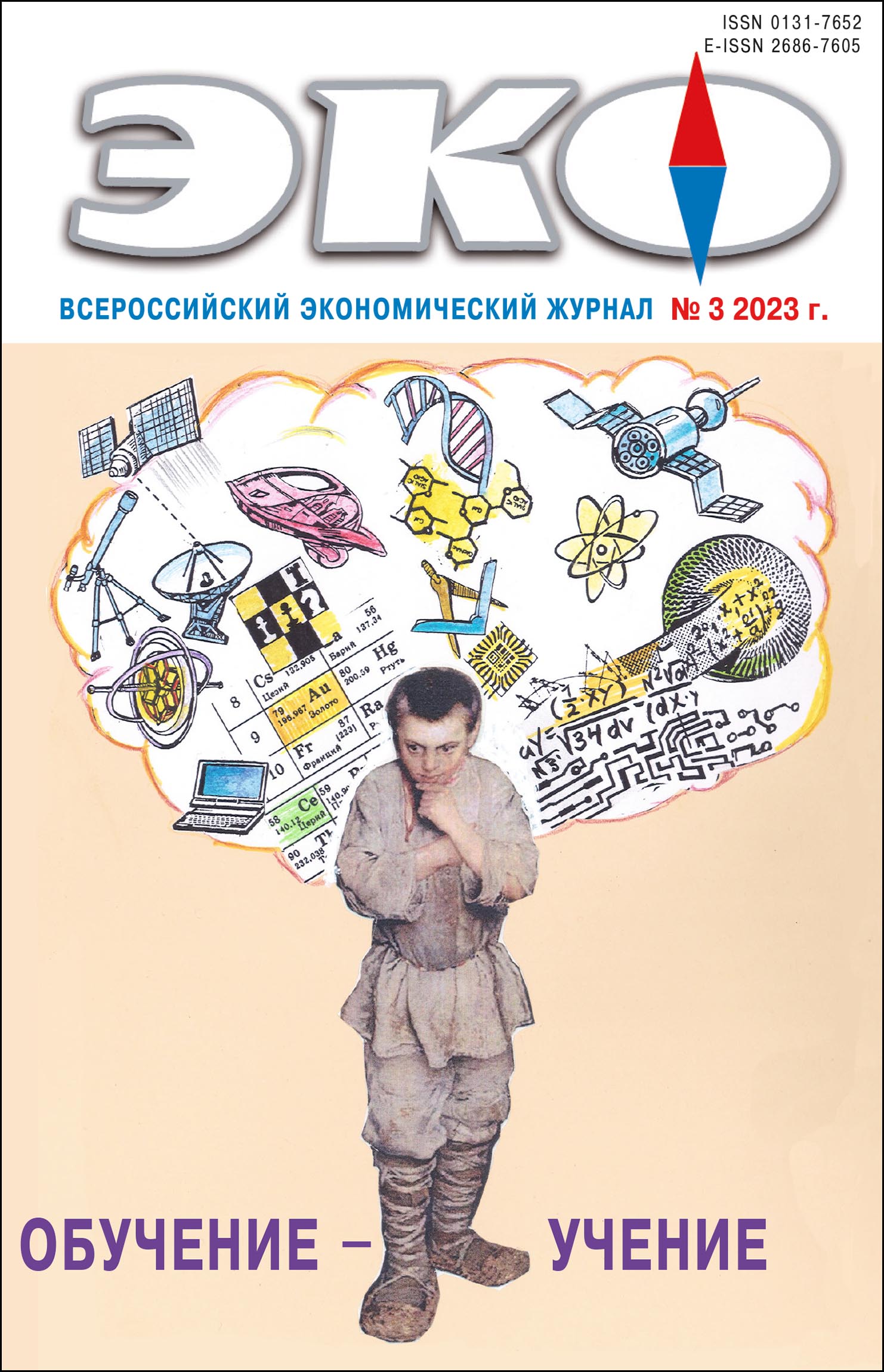ECONOMIC SOCIOLOGY AND DEMOGRAPHY
Migration Orientations of High School Students during Transition to Vocational Education
Published 2023-03-06
Keywords
- education; professional education; educational trajectories; educational migration; human capital; youth; social development
How to Cite
1.
Loginov Д, Semionova Е. Migration Orientations of High School Students during Transition to Vocational Education. ECO [Internet]. 2023 Mar. 6 [cited 2026 Jan. 20];53(3):158-76. Available from: https://ecotrends.ru/index.php/eco/article/view/4584
Abstract
The paper considers orientation options of households with older school children to migrate to other regions of Russia during the transition to vocational education. Based on the data of a special questionnaire survey, it has been revealed that attitudes towards educational migration of children cover about half of the families. The results of the study illustrate a significant differentiation of attitudes to territorial mobility of young people by settlement types of residence, living conditions and educational aspirations. The motivational spectrum of forming migratory attitudes is revealed and specified. It is shown that educational migration is considered by most households as the first stage of the child’s final move to a settlement with subjectively more favorable living conditions and building a working career, which expands the possibilities of formation of human capital of young people, but also objectifies the “ erosion” of resources from small settlements.References
- Беляев В. А., Калимуллина Э. Р. Межпоколенная мобильность из малых городов: реальные мотивы и симулякры // Вестник экономики, права и социологии. 2017. № 4. С. 233–238.
- Вячеславов В. Н. Типологизация факторов, влияющих на миграцию населения // Вопросы территориального развития. 2015. № 7. C. 1–6.
- Зайончковская Ж. А., Ноздрина Н. Н. Миграционный опыт населения региональных центров России (на примере социологического опроса в 10 городах) // Проблемы прогнозирования. 2008. № 4(109). С. 98–111.
- Захарова И. В. Сдерживание межрегиональной̆ учебной̆ миграции: роль вузов // Высшее образование в России. 2019. № 7. С. 71–84. DOI: 10.31992/0869–3617–2019–28–7–71–84
- Ислакаева Г. Р. Образовательная межрегиональная миграция: причины и социально-экономические следствия // Уровень жизни населения регионов России. 2016. Т. 12. № 3. С. 77–88.
- Кашницкий И. С., Мкртчян Н. В., Лешуков О. В. Межрегиональная миграция молодежи в России: комплексный анализ демографической статистики // Вопросы образования. 2016. № 3. С. 169–203. DOI: 10.17323/1814–9545–2016–3–169–203
- Ким А. Г., Дремлюга О. А., Смольянинова Е. Н. Социальные проблемы миграционного поведения молодежи в современных условиях // Азимут научных исследований: экономика и управление. 2018. № 4 (25). С. 125–128.
- Мкртчян Н. В. Миграция молодежи из малых городов России // Мониторинг общественного мнения: экономические и социальные перемены. 2017. № 1 (137). С. 225–242. DOI: https://doi.org/10.14515/monitoring.2017.1.15
- Санникова О. В. Некомпенсируемая образовательная миграция как проблема развития российского региона // Теория и практика общественного развития. 2015. № 24. С. 19–21.
- Флоринская Ю. Ф., Рощина Т. Г. Оценка уровня миграционной мобильности молодежи малых российских городов (по опросам выпускников школ) // Проблемы прогнозирования. 2008. № 3 (108). С. 125–139.
- Чернышев К. А. Образование как фактор миграционной подвижности: опыт оценки и принятия управленческих решений на региональном уровне // Вопросы управления. 2014. № 6 (31). С. 173–179.
- Becker, G.S., Tomes, N. (1994). Human capital and the rise and fall of families. In: Human Capital: A Theoretical and Empirical Analysis with Special Reference to Education (3rd Edition). Becker, G.S. (ed.). Chicago: The University of Chicago Press. Pp. 257–298.
- Bernard, A., Bell, M., Cooper, J. (2018). Internal Migration and Education: A Cross-National Comparison. Background paper prepared for the 2019 Global Education Monitoring Report. UNESCO. Available at: https://arxiv.org/ftp/arxiv/papers/1812/1812.08913.pdf (accessed 20.12.2022).
- Boyden, J. (2013). “We’re not going to suffer like this in the mud”: Educational aspirations, social mobility and independent child migration among populations living in poverty. Compare: A Journal of Comparative and International Education. No. 43 (5). Pp. 580–600. DOI:10.1080/03057925.2013.821317
- Heckert, J. (2015). New perspective on youth migration: Motives and family investment patterns. Demographic Research. No. 33. Pp. 765–800. DOI: https://doi.org/10.4054/DemRes.2015.33.27
- Whitehead, A., Hashim, I.M., Iversen, V. (2007). Child Migration, Child Agency and Inter-generational Relations in Africa and South Asia. Working paper, No. T24. Development Research Centre on Migration, Globalisation and Poverty, University of Sussex. Available at: https://assets.publishing.service.gov.uk/media/57a08c07e5274a27b2000f27/WP-T24.pdf (accessed 20.12.2022).

